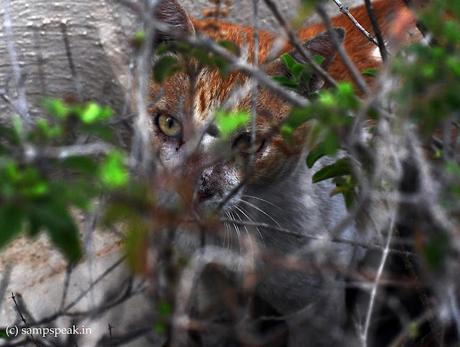Eyes are organs of the visual system. They provide beauty to the face and make us see beautiful things. They provide living organisms with vision, the ability to receive and process visual detail, as well as enabling several photo response functions that are independent of vision. Eyes detect light and convert it into electro-chemical impulses in neurons.
Eye is a wonder object, slightly asymmetrical globe, about an inch in diameter. The front part includes: Iris, Cornea, Pupil, Sclera, Conjunctiva, .. .. and all these work together to give us the vision that we see !! First, light passes through the cornea (the clear front layer of the eye). The cornea is shaped like a dome and bends light to help the eye focus. Some of this light enters the eye through an opening called the pupil (PYOO-pul). The iris (the colored part of the eye) controls how much light the pupil lets in. Next, light passes through the lens (a clear inner part of the eye). The lens works together with the cornea to focus light correctly on the retina. When light hits the retina (a light-sensitive layer of tissue at the back of the eye), special cells called photoreceptors turn the light into electrical signals. These electrical signals travel from the retina through the optic nerve to the brain. Then the brain turns the signals into the images you see. .. . and eyes need tears to work correctly !!
Seen here is Cat’s eye .. .. a Cat's eye or road stud is a retroreflective safety device used in road marking and was the first of a range of raised pavement markers. A key feature of the cat's eye is the flexible rubber dome which is occasionally deformed by the passage of traffic. A fixed rubber wiper cleans the surface of the reflectors as they sink below the surface of the road (the base tends to hold water after a shower of rain, making this process even more efficient). The rubber dome is protected from impact damage by metal 'kerbs' – which also give tactile and audible feedback for wandering drivers.

Amblyopia (or lazy eye) is the most common cause of vision loss among children. If it is not treated timely and properly, it can stay through adulthood. Amblyopia generally develops from birth up to age 7 years. It is the leading cause of decreased vision among children. Rarely, lazy eye affects both eyes.
Holding an eye hospital, its operating Ophthalmologist and anaesthetist guilty of medical negligence while conducting squint eye correction surgery, the National Consumer Disputes Redressal Commission (NCDRC) has recently directed them to pay Rs 1 crore compensation to the parents of a patient, who died on the operation table.
The top consumer court held the anesthetist guilty for not warning the operating surgeon about possible reaction from a medication and also held the hospital vicariously liable for the death of the patient 22 years ago. Alleging gross medical negligence and being aggrieved by the same, the complainants approached the NCDRC bench and prayed for Rs. 1,00,20,000/- as compensation. While considering the role of the cardiologist, the Commission noted that "No doubt, the child was about 8 years, school going, thus, there was less possibility of congenital anomaly. But, we cannot ignore that the child was suffering from bilateral squint and chest deformity, which were congenital anomalies. Therefore, the cardiac anomalies cannot be ruled out in this case. Moreover, if one physician (MD) notices functional murmur, then the expected skill from the Super Specialist i.e. the Cardiologist was more and higher degree of care should be there. It is lacking in the instant case and unfortunately, the child was declared fit for GA."
Considering the fact that there was no chance for the mother of the deceased for having another child, and also after taking note of the fact that the litigation was pending for 20 years, the Commission awarded the complainants with Rs 1 crore compensation and noted, "In the instant case, since, the Cardiologist –has not been arrayed as a party, monitory liability cannot be fixed upon him, and therefore, the hospital is held vicariously liable. Accordingly, we direct the Eye hospital to pay Rs. 85 lakh; the Anesthetist, shall pay Rs. 10 lakh and the operating Ophthalmologist, shall pay Rs. 5 lakh to the parents of the deceased child (Complainants) within 6 weeks from today. Beyond 6 weeks, the amount shall carry interest at 9% per annum till its realization. The OP-1 shall further pay Rs. 1 lakh towards cost of litigation."
Makes a sad reading !
With regards – S. Sampathkumar6th Sept 2022

